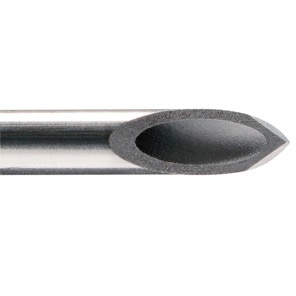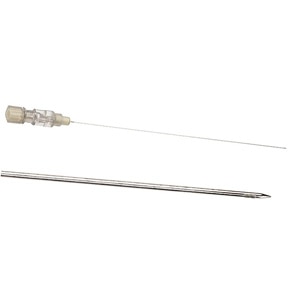Die BD® Whitacre-Nadeln werden mit proprietären Nadelspitzen, Seitenöffnungen und einzigartigen blendarmen Nabentechnologien hergestellt.
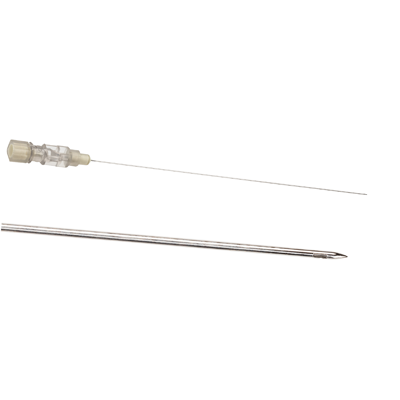
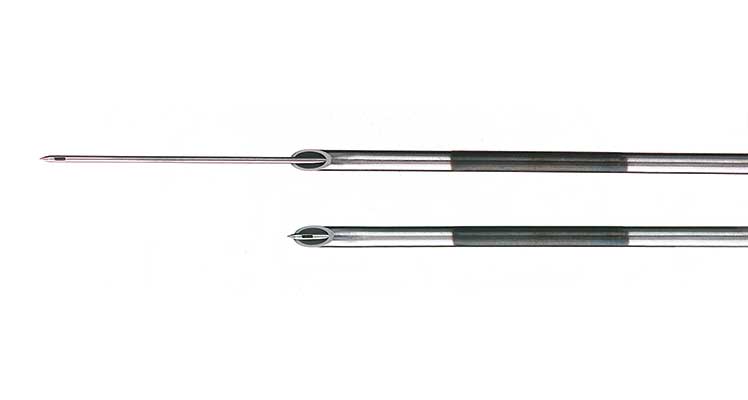
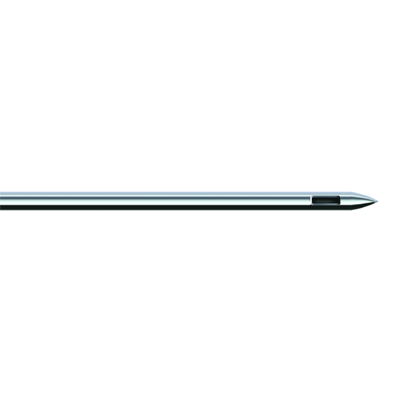

- Übersicht
- Products & Accessories
- EIFU & weitere Informationen
- FAQ
Sie sind in verschiedenen Größen mit Längen von 90 mm bis 119 mm und Stärken von 22 G bis 27 G erhältlich. High-Flow-BD® Whitacre-Nadeln verbessern die Durchflussrate und Geschwindigkeit der Liquorvisualisierung1.
- Verbesserte postoperative Patientenerfahrung
- Verbesserte Präzision
- Von einem vertrauenswürdigen Partner
Wird von Patienten postoperativ als besser wahrgenommen
BD® Whitacre Spinalkanülen, die dazu beitragen, das Risiko des postspinalen Kopfschmerzes (PDPH) zu minimieren2,3,4
Verbesserte Präzision
Durch BD® Spinalkanülen, die eine Liquor-Visualisierung ermöglichen und die richtige Positionierung der Kanüle unterstützen
Von einem vertrauenswürdigen Partner
Mit einer Reihe von Produkten und Konfigurationen zur Erfüllung der Anästhesieanforderungen in Ihrer Einrichtung
BD® Whitacre Kanülen geben ein deutliches taktiles „Klicken“ oder „Ploppen“ von sich, wenn die Bleistiftspitze die Dura durchdringt, und weisen den Anwender auf die richtige Position hin.
Es hat sich gezeigt, dass Kanülen mit Bleispiftspitze wie die BD® Whitacre Spinalkanüle dazu beitragen, das Risiko des postspinalen Kopfschmerzes (PDPH) im Vergleich zu Kanülen mit einer scharfen Spitze und größerem Durchmesser zu minimieren2,3,4
Die BD® Whitacre Spinalkanüle wird durch mehr als 25 unabhängige veröffentlichte Studien unterstützt.
Die BD® Whitacre™ Spinalkanülen mit transparenten Kanülenansätzen ermöglichen Anästhesisten die Liquor-Visualisierung für die richtige Kanülenpositionierung.
Die mit hoher Präzision gefertigte seitliche Austrittsöffnung ermöglicht es, das Lokalanästhetikum in einer bestimmten Richtung austreten zu lassen und trägt dazu bei, das Risiko einer Überdehnung der Dura zu reduzieren.5
Literaturhinweise
- Carson DF, Serpell MG. Clinical characteristics of commonly used spinal needles. Anaesthesia. 1995;50(6):523-525.
- Buettner J, Wresch KP, Klose R. Postdural puncture headache: comparison of 25-gauge Whitacre and Quincke needles. Reg Anesth. 1993; 18(3): 166–169.
- Corbey MP, Bach AB, Lech K, et al. Grading of severity of postdural puncture headache after 27-gauge Quincke and Whitacre needles. Acta Anaesthesiol Scand. 1997; 41(6): 779–784.
- Santanen U, Rautoma P, Luurila H, et al. Comparison of 27-gauge (0.41-mm) Whitacre and Quincke spinal needles with respect to post-dural puncture headache and non-dural puncture headache. Acta Anaesthesiol Scand. 2004; 48(4): 474–479.
- Urmey WF, Stanton J, Bassin P, Sharrock NE. The Direction of the Whitacre Needle Aperture Affects the Extent and Duration of Isobaric Spinal Anesthesia. Anesth Analg 1997;84:33-41
BD-75038
Hier finden Sie eine hilfreiche Sammlung weiterer Informationsmaterialien zu Ihrer Verfügung.
BD ist Gastgeber und Teilnehmer von Veranstaltungen, die Forschritt für die Welt der Gesundheit™ bringen.
Literaturhinweise
- Carson DF, Serpell MG. Clinical characteristics of commonly used spinal needles. Anaesthesia. 1995;50(6):523-525.
- Buettner J, Wresch KP, Klose R. Postdural puncture headache: comparison of 25-gauge Whitacre and Quincke needles. Reg Anesth. 1993; 18(3): 166–169.
- Corbey MP, Bach AB, Lech K, et al. Grading of severity of postdural puncture headache after 27-gauge Quincke and Whitacre needles. Acta Anaesthesiol Scand. 1997; 41(6): 779–784.
- Santanen U, Rautoma P, Luurila H, et al. Comparison of 27-gauge (0.41-mm) Whitacre and Quincke spinal needles with respect to post-dural puncture headache and non-dural puncture headache. Acta Anaesthesiol Scand. 2004; 48(4): 474–479.
- Urmey WF, Stanton J, Bassin P, Sharrock NE. The Direction of the Whitacre Needle Aperture Affects the Extent and Duration of Isobaric Spinal Anesthesia. Anesth Analg 1997;84:33-41
BD-75038
